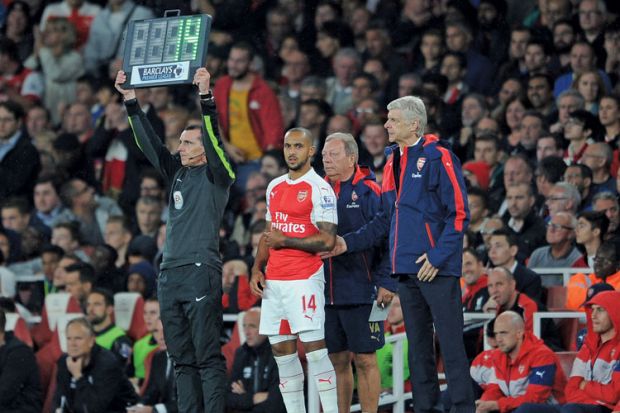Does it matter how national funding for research is organised? If speculation about changes to the structure of research councils is anything to go by, it certainly does.
With a spending review around the corner, and the Department for Business, Innovation and Skills looking to reduce its budget by 25 to 40 per cent, there has been much discussion about the future of the research councils, the Higher Education Funding Council for England and Innovate UK as we know them. According to reports in Times Higher Education, consultants commissioned by Sajid Javid, the business secretary, are thought to be examining the possibility of merging seven research councils into one, and there are suggestions that research funding from Hefce could be merged into one larger body too. Levels of unease in the research community are running high.
So why the concern? Let’s consider the importance of organisational structures in another context for a moment: professional football. Over the summer, clubs have spent extra-ordinary sums to sign top talent, and all the pressure is now on the manager to get optimum performance out of the squad and deliver good results. Their decisions about the organisation of the team are key to success – it is nearly all that pundits talk about. A club could have spent vast sums on top talent, but in the wrong formation, with the wrong support, headline talent under-performs, disappoints and ends up keeping the subs’ bench warm.
Organisation and formation matter in science too, and in particular the national structures and principles on which strong performance in science depend. The UK government is guardian of one of the most high-performing science bases in the world. In partnership with the private and charity sectors, it has invested substantial amounts over many decades to get to this point – funding that is delivered through the tried-and-tested structures of the research councils, along with the higher education funding councils and, more recently, Innovate UK.
Overall, the existing structure has proved efficient and effective, delivering results over and above what would be expected based on investment levels. In fact, the government has proudly championed the efficiency of the UK’s research system when compared with other systems internationally.
Of course it isn’t perfect. A recent triennial review found that levels of coordination between research councils and decision-making processes could be improved. An ongoing review by Sir Paul Nurse, president of the Royal Society, is looking into how this could be achieved. Having been commissioned by the government, it seems reasonable to expect that the Nurse review’s recommendations will be taken into account before any decisions are made.
Fundamental changes to the structure and management of research funding bodies are not to be taken lightly. As with any large-scale reorganisation, they would inevitably be expensive and disruptive in the short term. In an interview in last week’s THE, Sir John Savill, head of the Medical Research Council, argued that the idea of saving money through merging research councils was an “illusion” (“MRC chief: ‘illusion’ that council mergers will save money”, News, 17 September 2015). To be worthwhile, long-term savings and improvements in performance would have to outweigh the cost of reorganisation.
Three non-negotiables have contributed to the high performance of UK science: the dual support system, the policy of supporting excellence wherever it is found and the Haldane principle. These features must be embedded in the constitution of any new system. The government should also set out a clear rationale for any reorganisation alongside the criteria it would use to evaluate its success.
Another vital aspect of the success of the current system is the level and depth of expertise and experience contained in advisory and leadership roles. A key test of the success of any reforms will be whether the new structure attracts the same calibre of individuals into these positions.
Debate about the future structure of the research councils detracts from two other vital issues: the ring-fence of the science budget and the size of the funding settlement for science and for research and development across government. Both are crucially important to the performance of UK science.
It is hard to avoid the conclusion that substantial changes to the structure of science funding would be akin to a club sacking a successful manager who has continually surpassed expectations. The impatience and lack of long-term vision of Premier League clubs, as well as the pressure to be seen to be taking action, has led to the average tenure of managers getting shorter every season, with very little evidence that this improves performance. The government cannot afford to make the same mistake with the management of UK research funding by rushing through far-reaching reforms. With no less than the future of science, innovation and research in its hands, the stakes are considerably higher.
Naomi Weir is acting director of the Campaign for Science and Engineering.
POSTSCRIPT:
Print headline: This one’s a keeper
Register to continue
Why register?
- Registration is free and only takes a moment
- Once registered, you can read 3 articles a month
- Sign up for our newsletter
Subscribe
Or subscribe for unlimited access to:
- Unlimited access to news, views, insights & reviews
- Digital editions
- Digital access to THE’s university and college rankings analysis
Already registered or a current subscriber? Login




